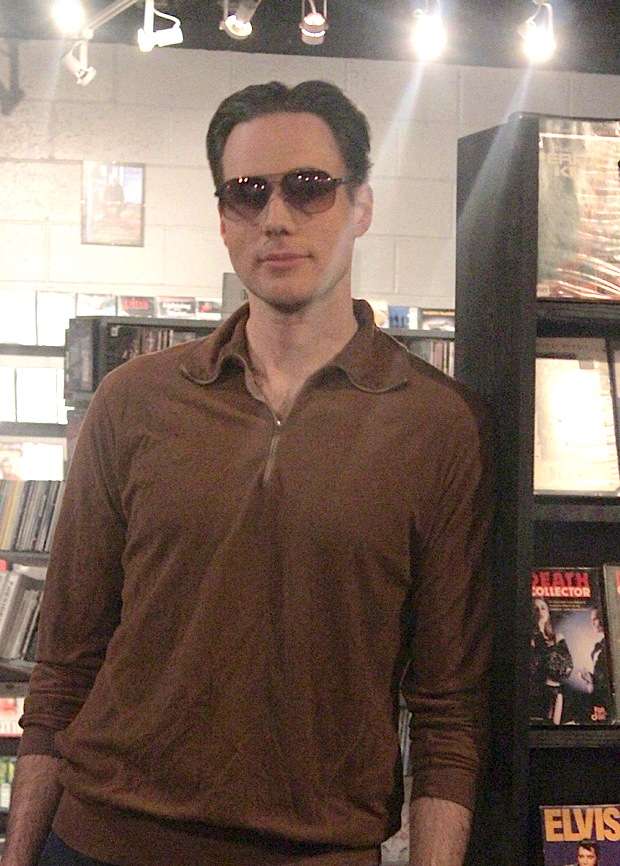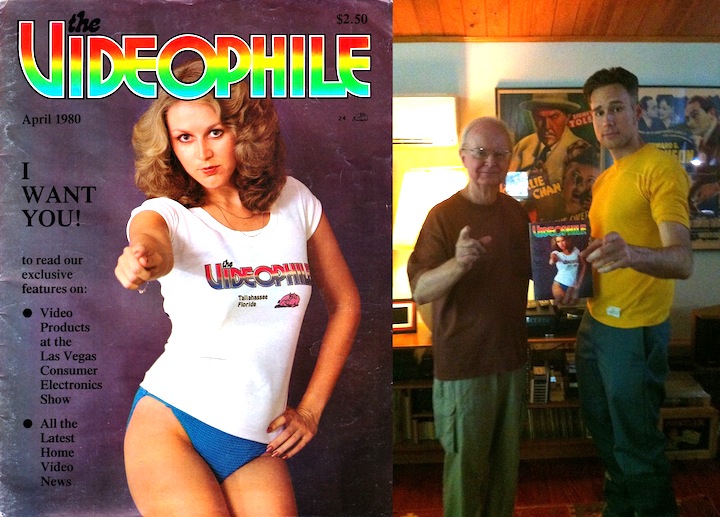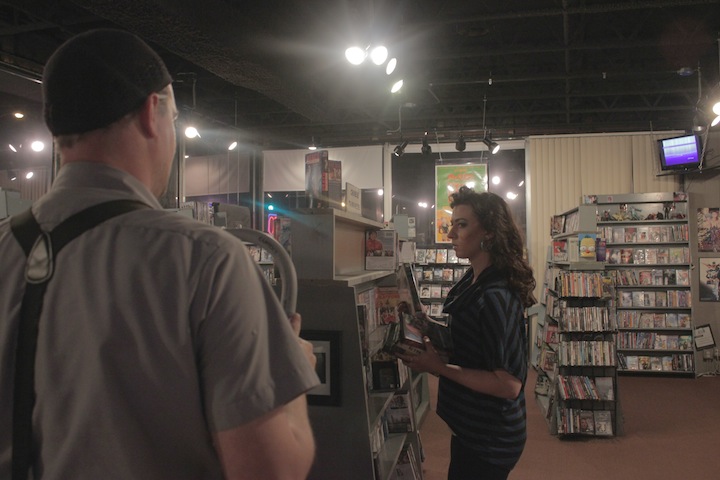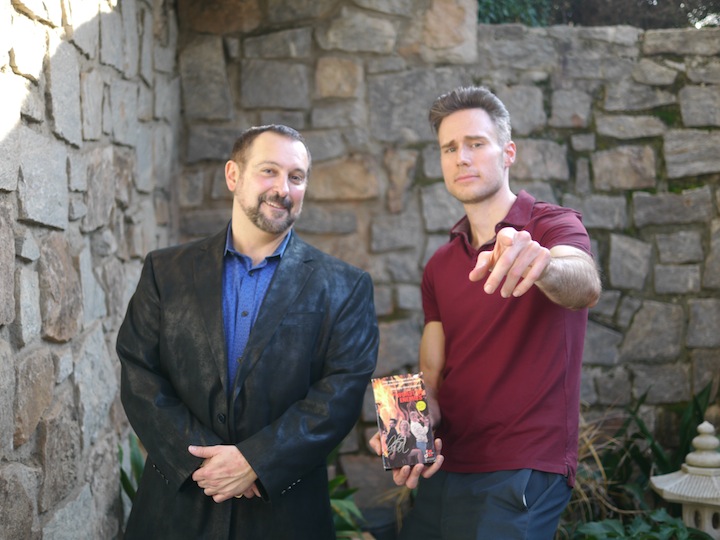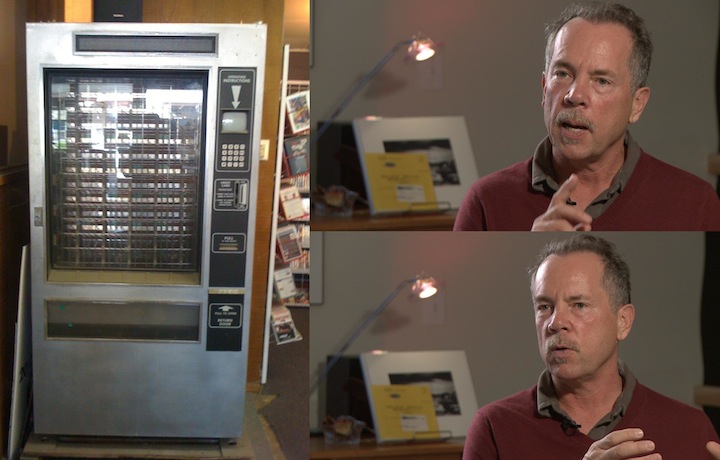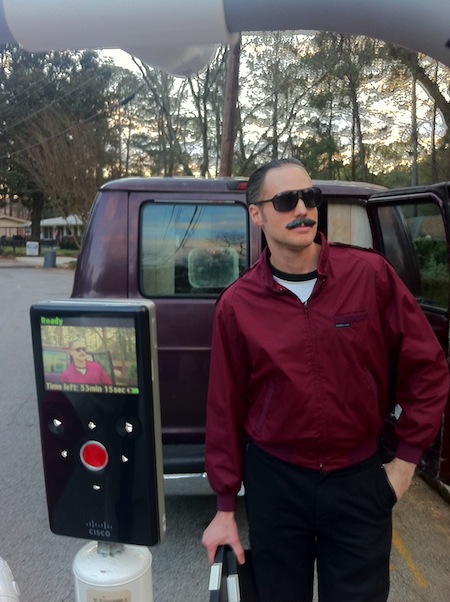 HITCHCOCK/TRUFFAUT (2015); Dir. Kent Jones; Starring Alfred Hitchcock, François Truffaut, Martin Scorsese, David Fincher, Wes Anderson and Peter Bogdanovich. Starts Friday, December 11; Landmark Midtown Art Cinema; Tickets and showtimes here; Trailer here.
HITCHCOCK/TRUFFAUT (2015); Dir. Kent Jones; Starring Alfred Hitchcock, François Truffaut, Martin Scorsese, David Fincher, Wes Anderson and Peter Bogdanovich. Starts Friday, December 11; Landmark Midtown Art Cinema; Tickets and showtimes here; Trailer here.
By Aleck Bennett
Contributing Writer
Landmark Midtown Art Cinema continues to spur discussion of great movies by presenting a great movie about a great book which discusses great movies. That’s a lot of “great,” but it’s hard not to go overboard in the superlatives when you’re talking about Kent Jones’ HITCHCOCK/TRUFFAUT.
In 1962, one of the founders of the French New Wave of cinema turned to his favorite director, one of the old guard, for a week-long series of conversations undertaken to establish the older filmmaker’s legacy as an artist. The resulting book (published in 1966) was one of the most influential documents ever published about filmmaking: HITCHCOCK/TRUFFAUT. The book worked as intended, as François Truffaut’s examination of Alfred Hitchcock’s ouvre to that point was possibly the first attempt to present the director’s work as a cohesive body of personal expression instead of a simple series of mindless thrillers.
It’s hard to imagine a time in which Alfred Hitchcock wasn’t taken seriously as a filmmaker. But even such a celebrated figure as Hitch was hardly unassailable during his time. Contemporary critics cited unbelievable plots or seeming lapses in logic in Hitchcock’s movies as detriments. He had, during the 1950s, become something of a comic figure. His gag-filled appearances as the host of ALFRED HITCHCOCK PRESENTS, as well as the plethora of products (magazines, books, record albums and board games) bearing his name, led to him becoming a beloved pop culture icon, rather than known as a true artist worthy of serious examination.
François Truffaut was no stranger to the serious examination of classic movies, having been one of the leading critics at CAHIERS DU CINÉMA, the celebrated French film magazine. It was there that he coined the “auteur theory”—the idea that some directors utilize the industrial trappings of filmmaking and the collaborative nature of the process the way a writer uses a pen or a typewriter, or the way a painter uses a brush. And, like a writer or painter, that these directors used the medium to explore their own idiosyncratic visions and psyches, and that much of these filmmakers’ projects contain similar themes, images and other elements that form an interconnected body of work. These directors were the true authors (or, in French, auteurs) of their work, rather than the screenwriters or producers behind the films, overriding the raw materials given to them and transforming their movies into personal testaments. It was this theory that fueled many of the magazine’s own critics (Truffaut, Jean-Luc Godard and Éric Rohmer among them) to film their own movies, thus launching the French New Wave.
 When the book was published, Hitchcock’s reputation was in need of rehabilitation, and Truffaut was riding a wave of acclaim. Truffaut was in a perfect position to draw attention to the solid artistic merit of Hitch’s films, and thankfully had both the writing talent to describe that merit and the intelligence to ask Hitch the right questions. HITCHCOCK/TRUFFAUT arrived at just the right time, and landed in the hands of a generation of aspiring directors who had grown up loving Hitchcock’s cinema and, like Truffaut, believed it to be worthy of serious consideration. This is where Kent Jones’ loving tribute comes in.
When the book was published, Hitchcock’s reputation was in need of rehabilitation, and Truffaut was riding a wave of acclaim. Truffaut was in a perfect position to draw attention to the solid artistic merit of Hitch’s films, and thankfully had both the writing talent to describe that merit and the intelligence to ask Hitch the right questions. HITCHCOCK/TRUFFAUT arrived at just the right time, and landed in the hands of a generation of aspiring directors who had grown up loving Hitchcock’s cinema and, like Truffaut, believed it to be worthy of serious consideration. This is where Kent Jones’ loving tribute comes in.
Jones not only offers a look inside the creation of this landmark work of film criticism, utilizing audio recordings of the interviews and never-before-seen photographs from the sessions, but also goes to the directors who have been inspired by this work. Wes Anderson probably best sums up its importance in the lives of the filmmakers involved, describing his copy as having been so frequently used that it has been reduced to a stack of loose papers held together with a rubber band. Also on hand are Martin Scorsese, David Fincher, Olivier Assayas, Richard Linklater, Arnaud Desplechin and many others to express just how this book inspired them to look deeper into Hitchcock’s work and his technique. In discussing VERTIGO, for example, the documentary provides a capsule description of how Truffaut’s book led to Hitchcock’s work being reassessed. At the time of the book’s release, VERTIGO was almost impossible to see, having been a critical and commercial failure. Yet the discussion of the movie between the two directors made it one of the most in-demand titles among aspiring filmmakers, who searched out for rare film prints in order to learn from it. As a result, the film’s reputation grew steadily over the years as it began to be more seriously discussed and analyzed.
Jones weaves HITCHCOCK/TRUFFAUT together beautifully, using clips from Hitchcock’s movies to illustrate the comments from the documentary’s participants, and winds up being as much a celebration of the director as it is of the book about him. It will make you want to read (or re-read) the book. It will make you want to revisit Hitch’s filmography. And then it will make you want to revisit Hitch’s filmography with a copy of the book at your side. My only argument with the film is that at 80 minutes, it’s far too short for my liking. But, then, as an avowed cinema nerd, I’d gladly spend hours upon hours listening to the world’s top directors discussing this book and the two men responsible for it. For all you normal human beings out there, it’s the perfect length to get you hungry for more. In short, HITCHCOCK/TRUFFAUT is a delight for anyone even remotely interested in the behind-the-scenes world of movie making.
Aleck Bennett is a writer, blogger, pug warden, pop culture enthusiast, raconteur and bon vivant from the greater Atlanta area. Visit his blog at doctorsardonicus.wordpress.com.

